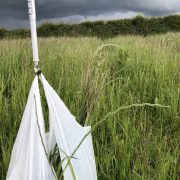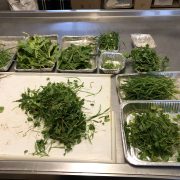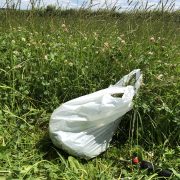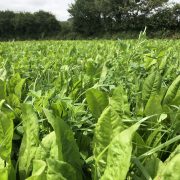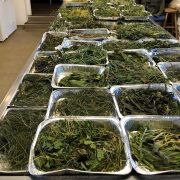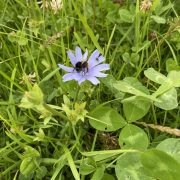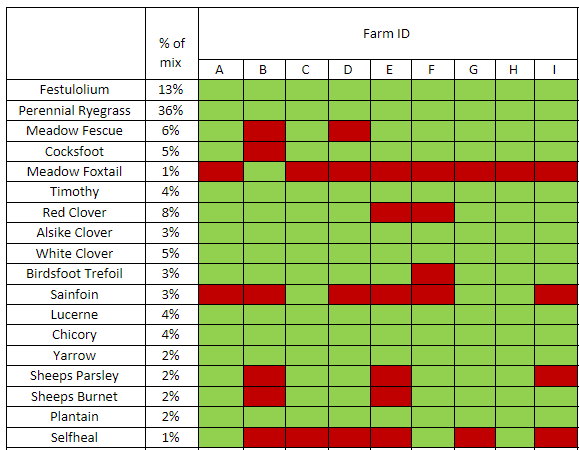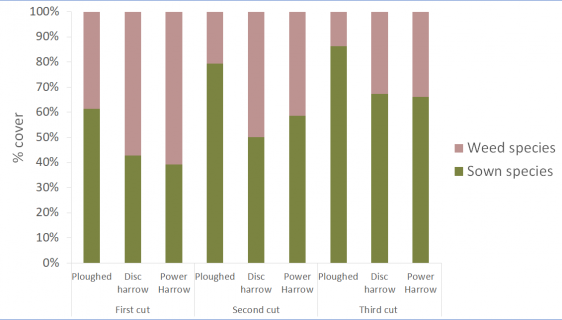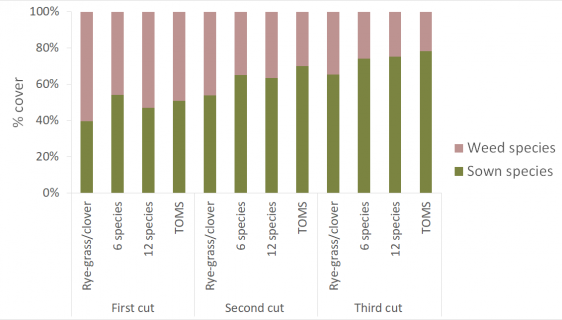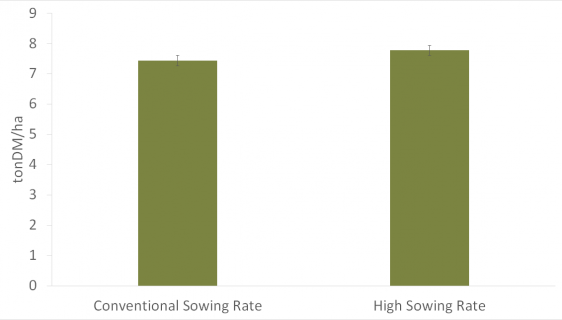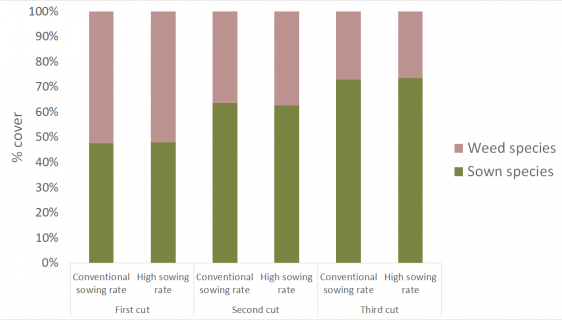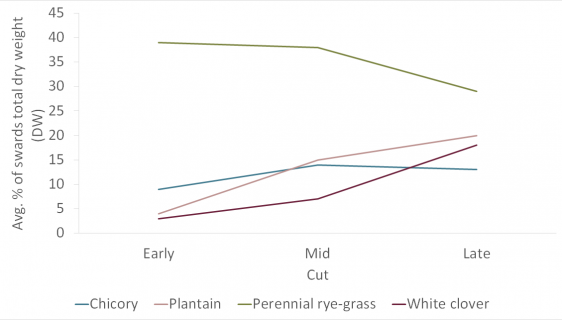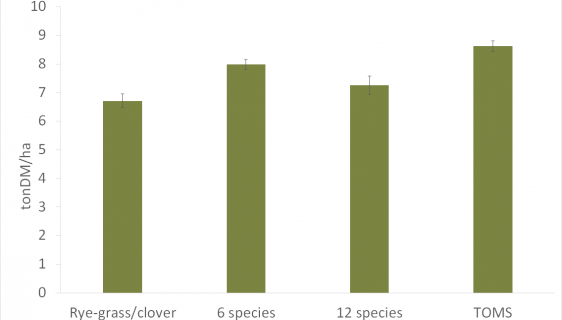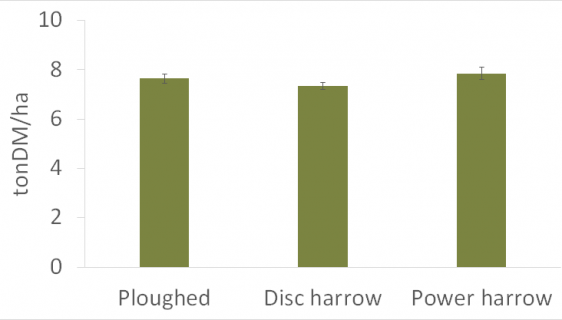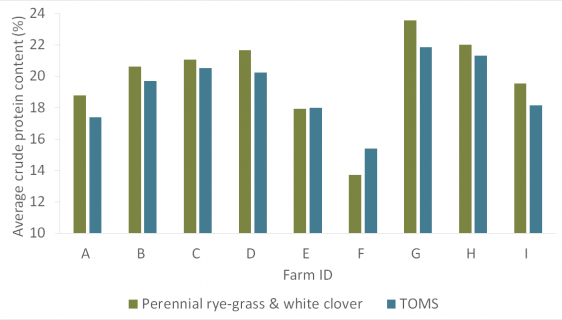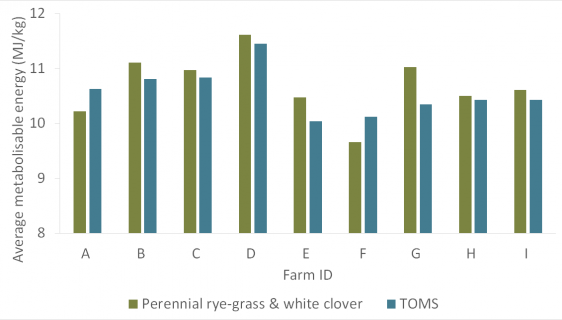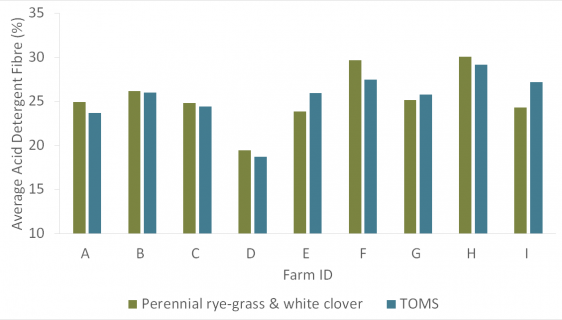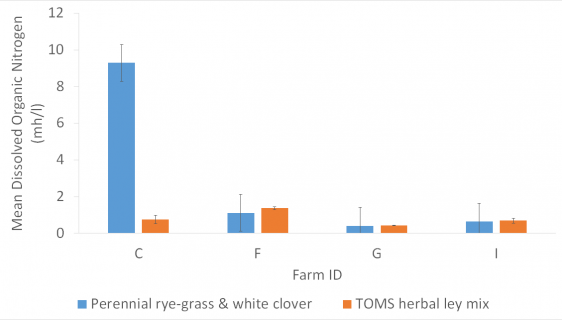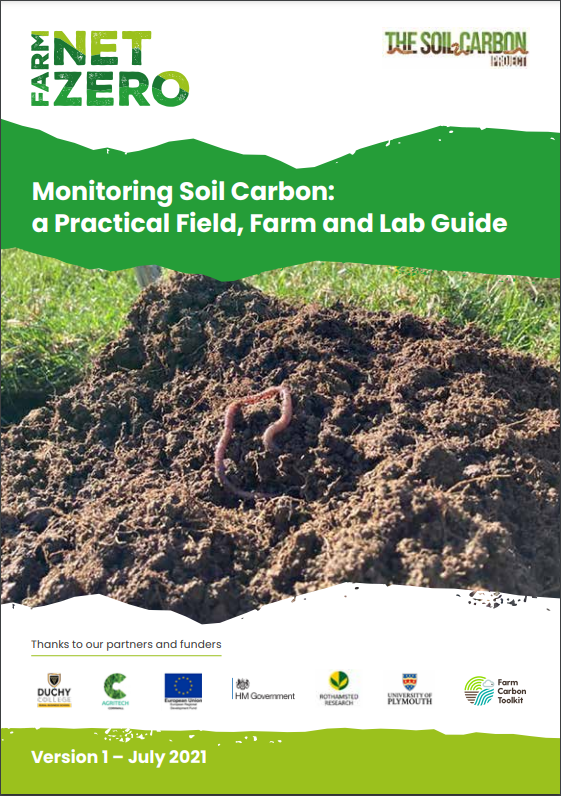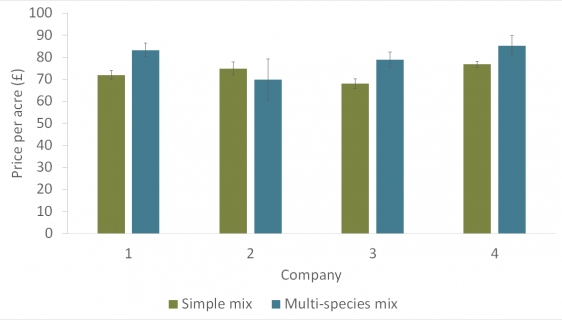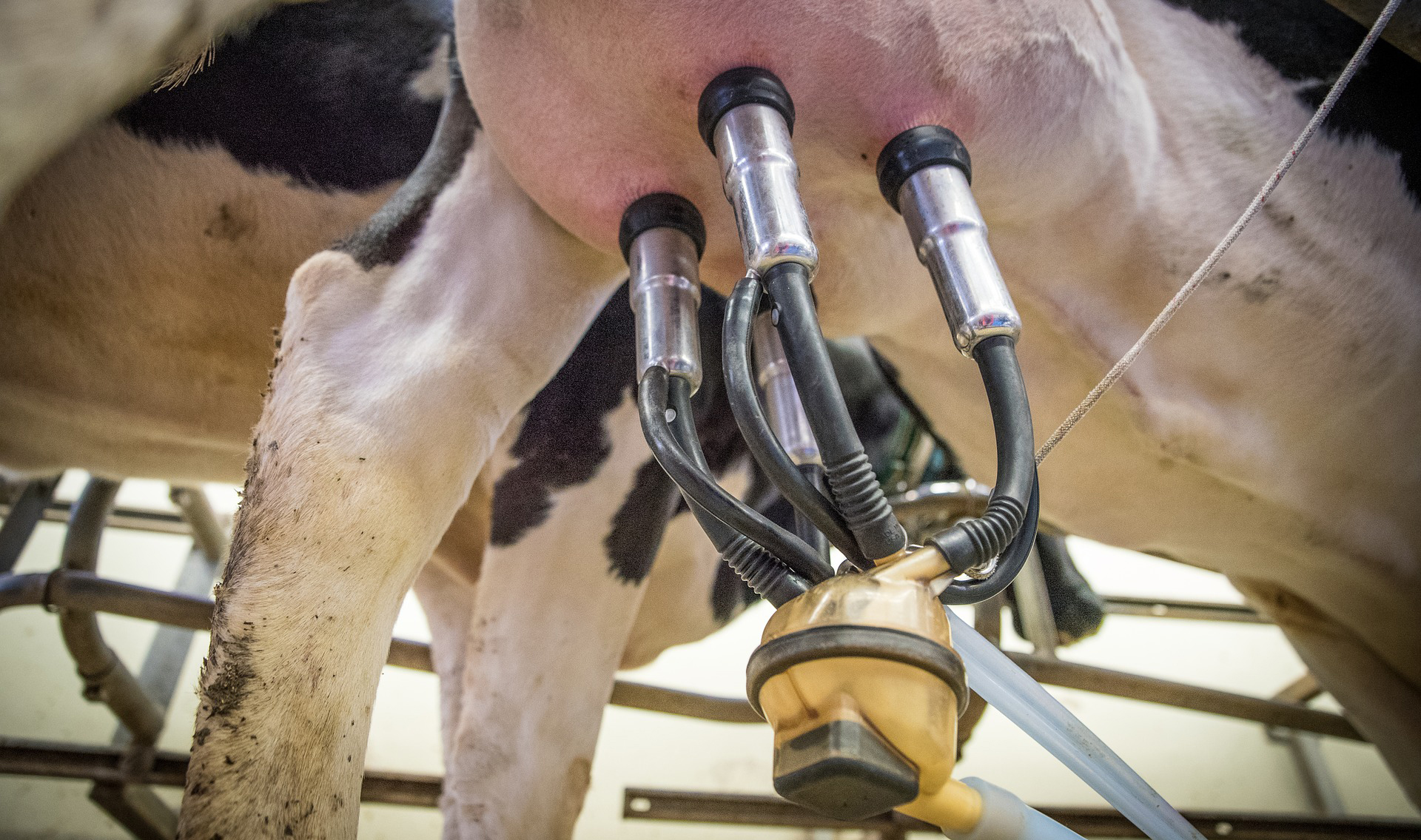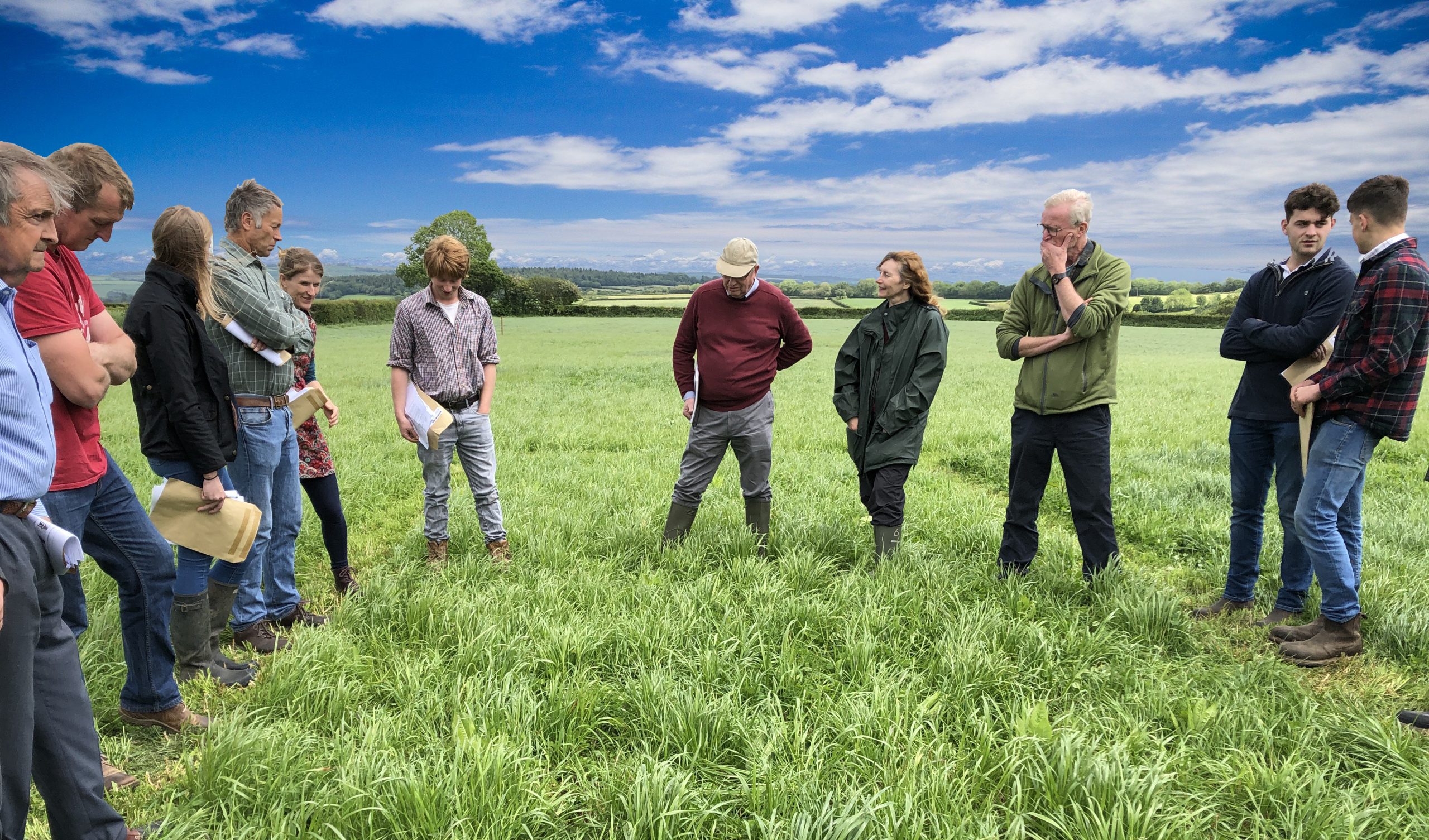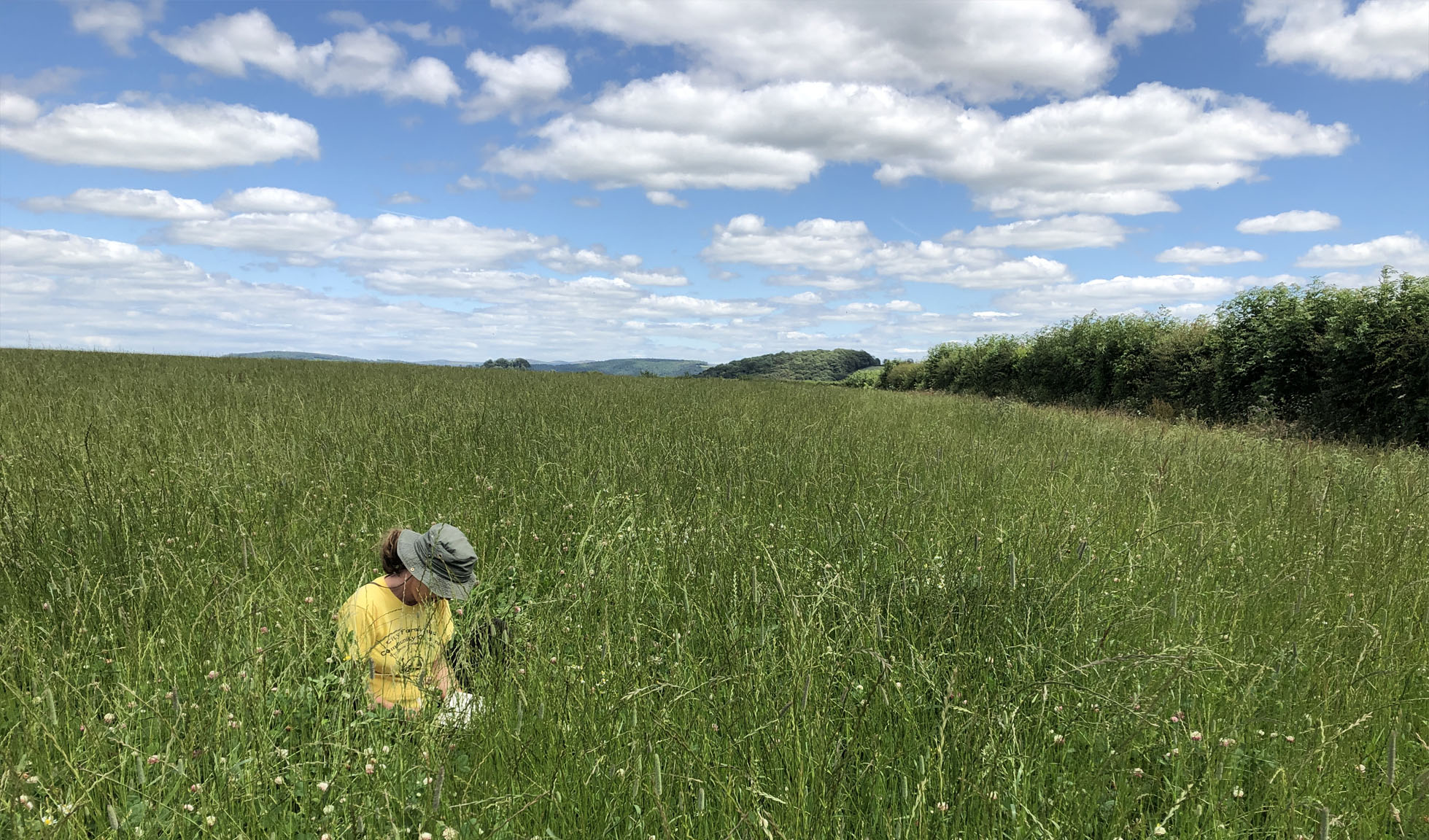OUR FARM RESEARCH
The Toolbox of Multi-species Swards (TOMS) project evaluated multi-species sward yield and forage quality at farms across Cornwall, benchmarked against a simple rye-grass and white clover control mix, along with the farmer’s own ley, as well as at comprehensive replicated plot trials at Rothamsted Research North Wyke and Duchy College.
Find out about the project design below, or jump straight to the results by clicking on the boxes of interest.
What we did
What we did
How the TOMS trials were designed, what species were grown and how the trials were established. Read more >
Micronutrients
Micronutrients
Were there any differences in mineral content, and did this change over the course of the season? Read more >
Establishment and species composition
Establishment and species composition
Which species grew well on Cornish farms and what effect did the establishment method have? Read more >
Soil and water quality
Soil and water quality
Did the herbal ley impact on soil organic matter, soil carbon or nitrate leaching levels? Read more >
Yield and Nutrition
Yield and Nutrition
Which species contributed most and least to yield? Was there a difference in forage quality? Read more >
Seed cost
Seed cost
Are herbal ley seed mixtures more expensive, and if so, how can species selection help to mitigate this? Read more >
What we did/trial design
Farm demo and plot trials
Experimental plots were established on 9 farm sites across Cornwall (8 in autumn 2018 and 1 in spring 2019). Farmers were each given 20kg of the “TOMS” mix, an 18 species mix and 20kg of the binary white clover and rye-grass control. These were sown at a sowing rate of 13-14kg/acre, which equated to approximately 1.5 acres of each mix sown in adjacent strips. The rest of the field was sown to whatever mixture the farmer would have sown in that field without the involvement of the TOMS project (referred to as “Farmer’s Own”). This tended to be either a rye-grass and white clover mix, or a GS4 herbal ley for stewardship.
The establishment method, fertility applications and cutting/grazing regime were left open to the farmer to continue with their standard management practices. The methodology therefore varied from farm-to-farm, however, they were all reflective of real-life farming practices.
The on farm trials were supplemented with plot replicated trial was established at Duchy College home farm.
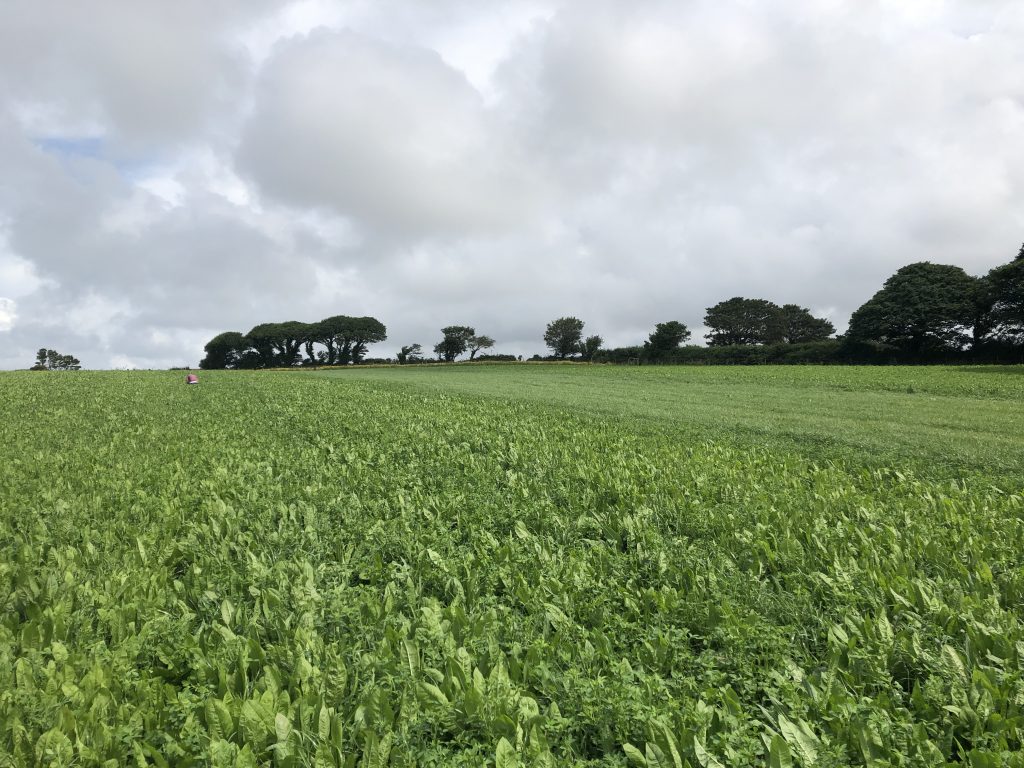
The 18 species TOMS mix contained the following...
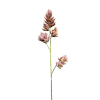
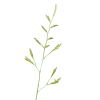
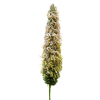
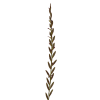
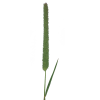
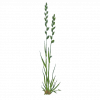
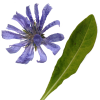
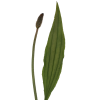
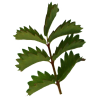
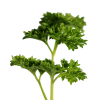
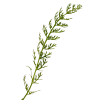


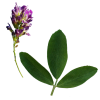

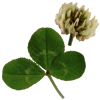
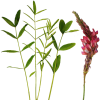
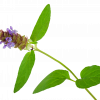
Sampling
- Soil samples were taken from each ley prior to cultivation and sowing. A second set of soil samples were taken in 2020.
- Forage samples were cut at three time points per year for two grazing seasons. Quadrat assessments of species presence/absence, percentage cover and flower counts were taken and samples were cut for forage quality, micronutrient content and for speciation purposes (to establish individual species contribution to the sward).
Rothamsted Research Trials
Work at Rothamsted Research North Wyke investigated the impact of species composition, sowing rate and seedbed preparation on forage quality and quantity. Silage from multi-species swards was made and analysed, including work to determine optimum mixtures and conditions.
A 72-plot replicated trial was established in 2018. The plots were established in order to investigate the effects of the following factors on forage productivity and forage quality under a cutting management:
-
-
- Botanical composition;
- Sowing rate;
- Seed bed preparation.
-
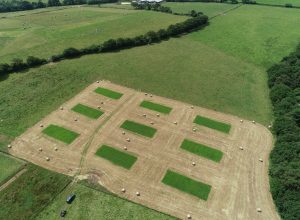
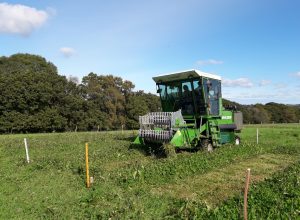
Seed bed preparation
Three different cultivation approaches were trialed, to assess the effects of initial seed bed preparation on species establishment, yield and forage quality.
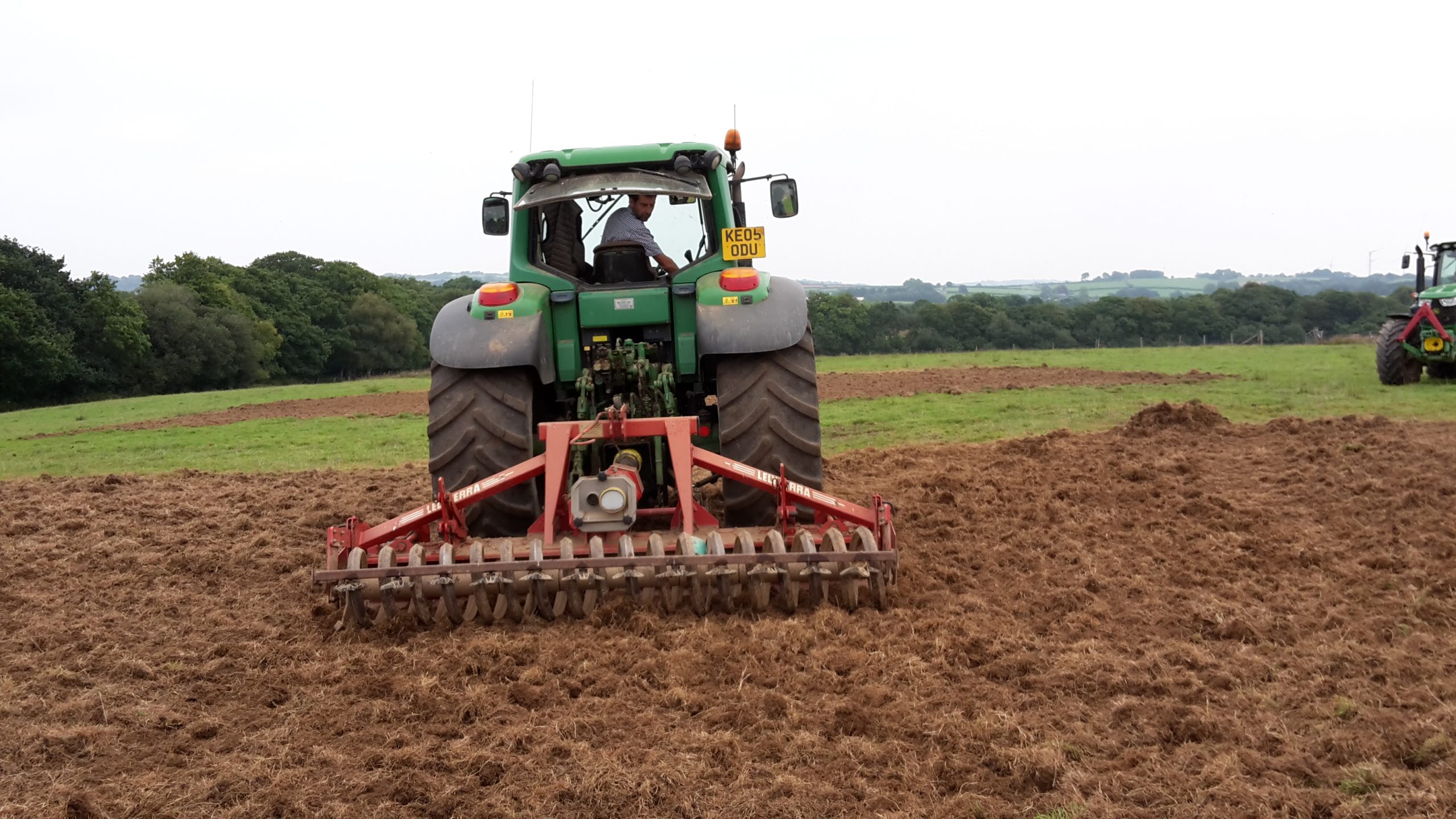
Power Harrow
-
-
- Power harrowed 3 times
- Depth approximately 5-7cm
- Rolled (Cambridge roller)
-
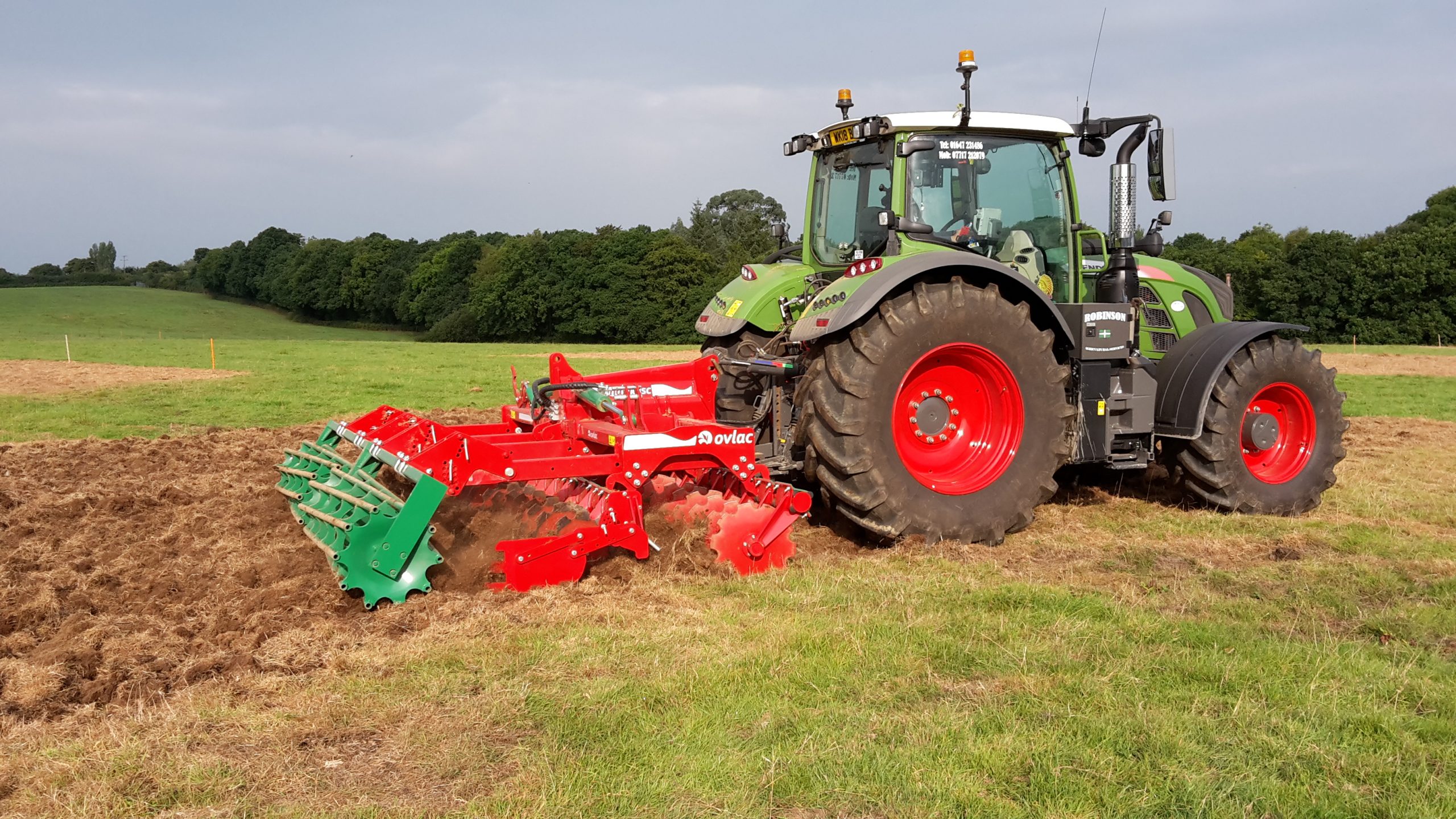
Disc Harrow
-
-
- Power harrowed 3 times
- Depth approximately 10-15cm
- Rolled (Cambridge roller)
-
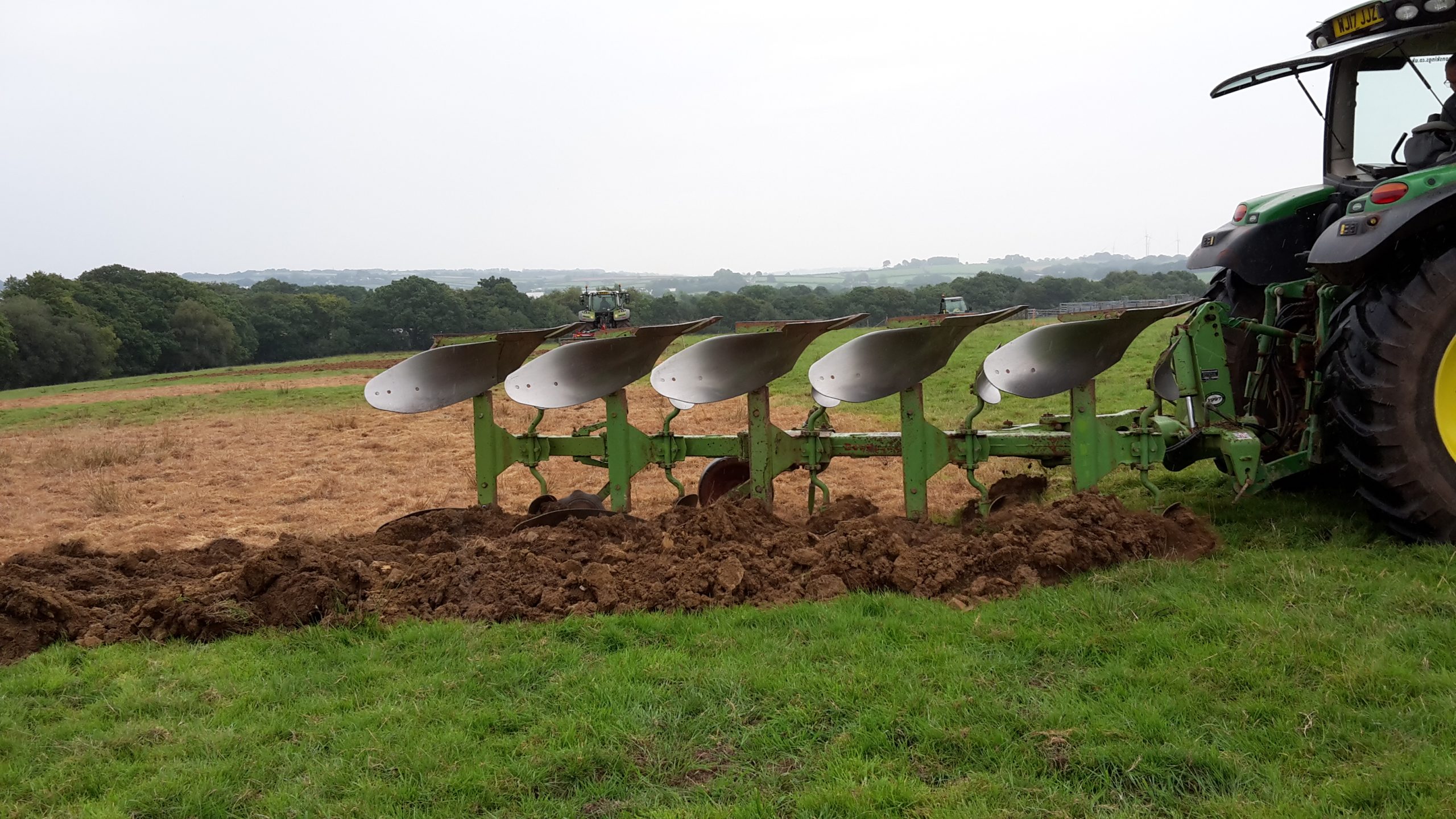
Ploughed
-
-
- Ploughed (20-25cm)
- Rolled (Cambridge roller)
- Power harrowed twice
- Rolled (Cambridge roller)
-
Species mixes and sowing rates
Four different species mixes were sown including a control rye–grass and white clover mix and three mixes of increasing complexity of grasses, legumes and herbs. The binary rye-grass and white clover and the most diverse 18 species seed mix were the same mixes grown at the farmer field trials described above. Seed mixes were sown at either a conventional rate, or a conventional rate plus an additional 50% and weed infestations were compared. Herbicide was applied to the existing sward prior to cultivation and all treatments were replicated three times.
Binary rye-grass and white clover
Perennial Rye-grass
White Clover
Two sowing rates
Conventional 14kg/ac
Plus 50% 21kg/ac
6 species mix
Perennial Rye-grass
Timothy
White Clover
Bird’s-foot-trefoil
Chicory
Ribwort Plantain
12 species mix
Perennial Rye-grass
Festulolium
Cock’s-foot
Timothy
Red Clover
White Clover
Bird’s-foot-trefoil
Lucerne
Chicory
Ribwort Plantain
Yarrow
Sheep’s Parsley
High Diversity (TOMS)
Perennial Rye-grass
Timothy
Cocksfoot
Festulolium
Meadow Fescue
Meadow Foxtail
White Clover
Birdsfoot Trefoil
Lucerne
Alsike clover
Red Clover
Sainfoin
Chicory
Ribwort Plantain
Sheep’s Burnet
Sheep’s Parsley
Selfheal
Yarrow
Species Composition and Forage Quality
The percentage cover was estimated at establishment and again prior to three silage cuts in 2019 in order to assess species persistence and weed ingress. Dry matter (DM) yield was also estimated at early, mid and late season silage cuts and samples were analysed for metabolizable energy (ME), crude protein (CP), total water soluble carbohydrate, sugar fractions, ash, fibre (acid detergent fibre (ADF), acid detergent lignin (ADL), modified acid detergent fibre (MADF) and neutral detergent fiber (NDF)) and minerals (macro and trace elements).
Establishment and species composition
Most common species in herbal leys, present in over 50% of quadrats, were rye–grass, white clover, plantain, chicory, timothy, yarrow, festulolium, cock’s-foot and red clover.
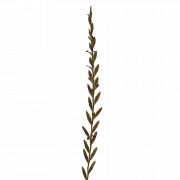
Rye-grass 99%
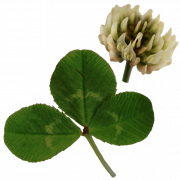
White clover 95%
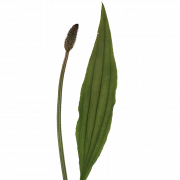
Ribwort plantain 90%
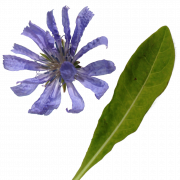
Chicory 84%
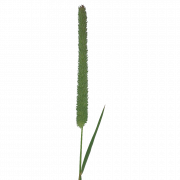
Timothy 86%
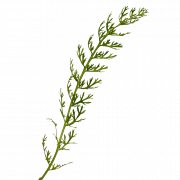
Yarrow 62%
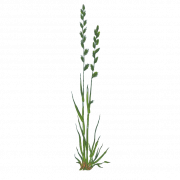
Festulolium 66%
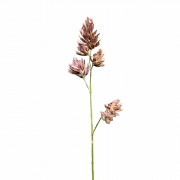
Cock’s-foot 55%
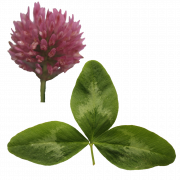
Red clover 58%
Percentages relate to the number of quadrats the species was present in
Selfheal, meadow foxtail, sheep’s parsley, sainfoin, meadow fescue and sheep’s burnet were observed in less than a quarter of visits.
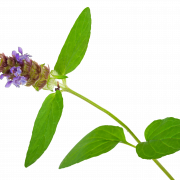
Selfheal 3%
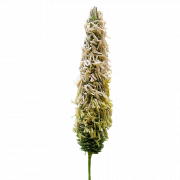
Meadow foxtail 4%
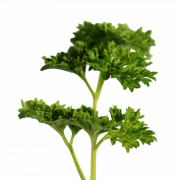
Sheep’s parsley 10%
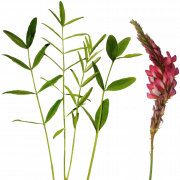
Sainfoin 12%
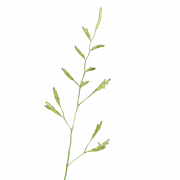
Meadow fescue 24%
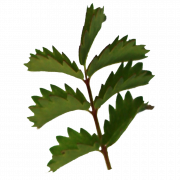
Sheep’s burnet 21%
Percentages relate to the number of quadrats the species was present in
Research undertaken at North Wyke found tillage depth had no overall impact on annual dry matter (DM) yield.
At North Wyke, for all three cuts, the percentage cover of sown species was higher and weeds generally lower under ploughing, although it is important to note that the weed burden was particularly high at this site and may not be typical of all situations. This may have implications for the longevity of the sward, i.e. more species should persist in the ploughed plots than in the min-till sward as there was better establishment in the seed bed. However, it should be noted that ploughing will have a negative impact on soil organic matter.
On farms, there was no significant difference in fresh weight of weeds across treatments.
At North Wyke, complex seed mixes had less weed invasion compared with a simple rye-grass and white clover mix.
The graph shows that the weed burden declined over time but remained higher in the ryegrass-clover mix.
Trials at North Wyke showed no benefit of sowing at a higher rate in terms of yield or weed suppression in the first growing season. There was no difference in weed burden at the two different sowing rates. Weed burden declined under both sowing rates at each subsequent silage cut.
As the application of herbicides is not an option in multi-species leys it is important to find ways to reduce weed ingress. The points below, from experience at North Wyke, may help with the establishment of multi-species swards:
- Sow into a clean seed bed – this will reduce the threat of competition from weeds and may increase the longevity of the sward.
- Timing sowing to avoid when the dominant weeds germinate can help to reduce weed ingress. For example, Yorkshire Fog’s, peak gemination period is from August-November so sowing in spring could improve the establishment of the multi-species ley.
At the farm sites in Cornwall, the dominance of some species changed over the course of a season during the first year of establishment. Plantain, chicory and white clover all showed a general increase in contribution to sward total dry weight (DW) across all of sites towards the end of the season, whereas the yield of rye-grass declined.
Yield and Nutrition
Across farms there was no significant difference in the yield of the herbal ley (TOMS) compared to the simple rye-grass and white clover mix. Our results have therefore shown that there is no yield penalty from growing herbal leys. Note that our data does not represent the total yield but a snapshot in time of comparative yield during the early, mid and late season cutting/grazing windows.
At the Duchy College replicated plot trial, the rye-grass and white clover binary mix was lower yielding than all other mixes. However, the plots were not necessarily managed in a way comparable to a commercial system.
At North Wyke, there was no yield penalty for growing herbal leys when compared to a perennial rye-grass and white clover mix. Within the ploughed plots, the TOMS mix outperformed the other seed mixes.
Species contributing the greatest to the dry weight yield were chicory, plantain, perennial rye–grass and white clover.

Chicory 12%

Plantain 13%

Perennial Rye-grass 35%

White clover 9%
Percentages represent the average contribution of each species to the dry weight (DW) of all samples’.
Although, timothy, yarrow, festulolium, cocksfoot and red clover are all notable for their high (>50%) sward presence, they have a relative small (<10%) contribution to sward biomass.

Timothy 4%

Yarrow <1%

Festulolium 7%

Cocksfoot 1%

Red clover 5%
Percentages represent the average contribution of each species to the dry weight (DW) of all samples’.
Data was collected from farms immediately prior to cutting or grazing. In the first year, it was found that dry weight yield declined as the season progressed for both the simple rye-grass and white clover mix and the herbal TOMS mix.
| Mean DW (t/ha) | ||
|---|---|---|
| Time point | Rye-grass/white clover | Herbal (TOMS) |
| Early | 3.07 | 3.46 |
| Mid | 1.76 | 1.67 |
| Late | 0.68 | 0.60 |
*Mean yield across farms. Time points were “early” (April – May); “mid” (June – early August) and “late” season (late August – October)
Measures of crude protein, metabolizable energy and digestibility were made on all farms, and the average across three cuts in the first year of establishment, for each farm, are shown in the graphs below. Generally, even though there were differences between leys on some of the farms, these differences were small
A comparison of average neutral detergent fibre content between herbal and rye-grass/white clover leys across nine farms
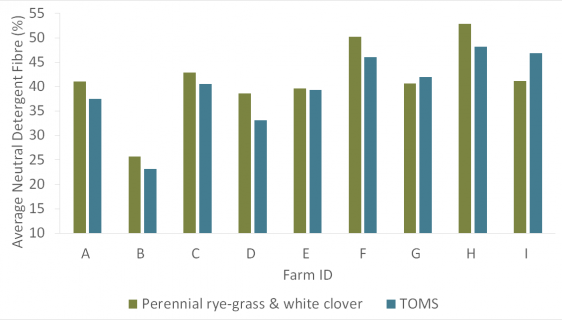
Neutral Detergent Fibre (NDF) provides a complete measure of the feed fibre value. This value is higher than for ADF because it includes fibre that can be digested by the livestock such as hemicellulose.
In the first year, overall there was no difference between the two mix types grown although there was a lot of variability between farms.
At the Duchy College plot trial, the rye-grass and white clover binary mix had higher average crude protein compared to all other treatments.
In addition, there was no reduction in forage quality in herbal leys compared to the other mixes in terms of digestibility, protein, dry matter and energy.
It should be noted that this was not necessarily representative of commercial growing conditions.
On farm trials showed no differences in forage quality parameters (crude protein, metabolisable energy and digestibility) between sampling points.
Crude protein exhibited seasonality at the Duchy College trials, and was at its highest within the perennial rye-grass and white clover mix late in the season, while it was lower than the TOMS mix early in the season.
The effect season on forage crude protein levels at the Duchy College plot trials
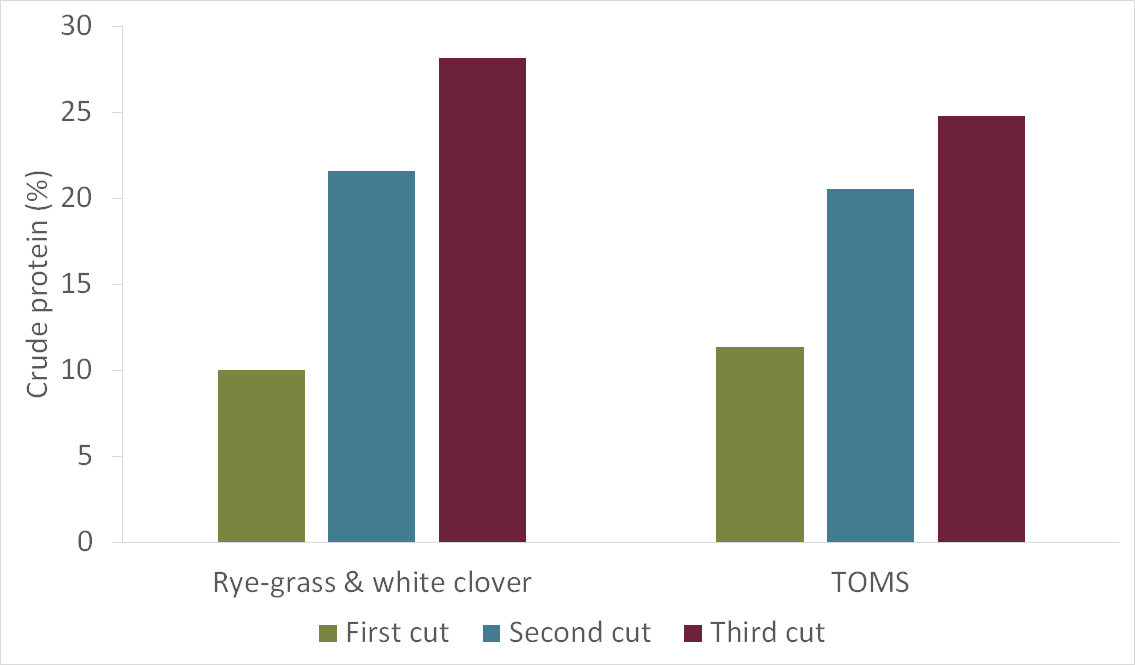
The effect season on forage metabolisable energy levels at the Duchy College plot trials
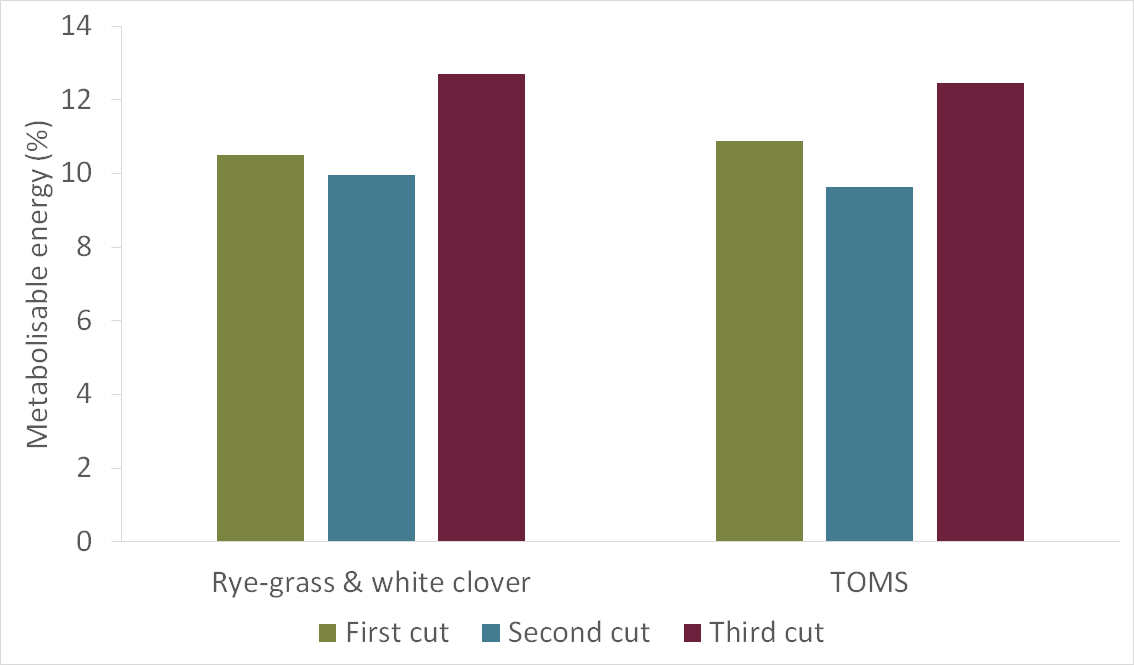
Trials at North Wyke found crude protein, ash and fibre fractions (except neutral detergent fibre) increased throughout the growing season. Total water soluble carbohydrate and sugar fractions (except glucose), decreased throughout the growing season
At North Wyke, crude protein and total water soluble carbohydrates (including fructan) significantly differed between the four seed mixes.
The pattern of crude protein content in the four mixtures was, from highest to lowest, 6, 2, 12 and 18 species mixes, respectively.
Fructan and total water soluble carbohydrates from highest to lowest: 18, 2, 12, 6 species mixtures, respectively.
Fructan is a complex sugar providing an important energy source for ruminal microbiota, and water soluble carbohydrate analysis is considered to be a good method for analysing sugar content in ruminant nutrition as it includes all sugars relevant to ruminant digestion.
At the North Wyke plot trials, where there was a high weed burden, cultivation method had a significant effect on crude protein, acid detergent fibre, neutral detergent fibre and fructan (complex sugars providing an important energy source for ruminal microbiota).
Crude protein and acid detergent fibre were highest in the ploughed plots and lowest in the power harrowed plots.
Neutral detergent fibre was highest in the power harrowed plots and lowest in the ploughed plots.
Fructan was highest in the disc harrowed plots and lowest in the ploughed plots.
Micronutrients
The micronutrient content of the herbal leys was compared with ryegrass clover leys across all of the farm sites.
Mineral content is a complex issue influenced by a number of factors including species abundance and season and we are currently analysing the data relating to this.
The micro-nutrient content the rye-grass & white clover mix and the TOMS herbal ley mix
| Element | Rye-grass & white clover | TOMS |
|---|---|---|
| Boron (ppm) | 10.93 | 12.48 |
| Calcium (%) | 0.84 | 0.99 |
| Copper (ppm) | 8.17 | 8.34 |
| Iodine (ppm) | 2.67 | 2.00 |
| Iron (ppm) | 246.20 | 201.30 |
| Magnesium (%) | 0.19 | 0.19 |
| Manganese (ppm) | 41.19 | 38.93 |
| Molybdenum (ppm) | 1.71 | 1.56 |
| Nitrogen (%) | 3.19 | 2.93 |
| Phosphorus (%) | 0.37 | 0.38 |
| Potassium (%) | 2.71 | 2.93 |
| Selenium (ppm) | 0.06 | 0.05 |
| Sodium (%) | 0.25 | 0.21 |
| Sulphur (%) | 0.28 | 0.30 |
| Zinc (ppm) | 23.2 | 26.05 |
| Cobalt (ppm) | 0.19 | 0.18 |
The table shows all the elements measured for the herb species included in the TOMS mix during the first year.
There was variation in micronutrient content between individual herb species, but not all species grew on all farms, so further research is required.
Plantain and chicory grew on all farms, therefore data on these species is most reliable.
Of the species tested, chicory was found to have the highest levels of selenium, one of our priority minerals. Chicory also had high levels of potassium, sodium, zinc and molybdenum.
Plantain had significantly higher levels of iodine and calcium.
The micro-nutrient content of the five herb species included in the TOMS herbal ley mix
| Burnet* | Chicory* | Plantain* | Selfheal* | Yarrow* | |
|---|---|---|---|---|---|
| Boron (ppm) | 34.5 | 25.79 | 18.78 | 32 | 31.483 |
| Calcium (%) | 1.87 | 1.569 | 2.26 | 0.97 | 1.013 |
| Copper (ppm) | 7.35 | 11.27 | 9.34 | 13.8 | 13.233 |
| Iodine (ppm) | 0.8 | 1.6 | 2.2 | 1 | 1.7 |
| Iron (ppm) | 125.5 | 98 | 114.5 | 557 | 252.2 |
| Magnesium (%) | 0.485 | 0.2956 | 0.235 | 0.4 | 0.237 |
| Manganese (ppm) | 30.65 | 38.63 | 24.53 | 44.7 | 63.08 |
| Molybdenum (ppm) | 1.43 | 1.978 | 1.157 | 0.53 | 1.282 |
| Nitrogen (%) | 2.325 | 3.239 | 2.787 | 2.82 | 3.533 |
| Phosphorus (%) | 0.335 | 0.382 | 0.424 | 0.64 | 0.425 |
| Potassium (%) | 1.85 | 4.008 | 2.997 | 3.14 | 4.515 |
| Selenium (ppm) | 0.065 | 0.0767 | 0.067 | 0.05 | 0.05 |
| Sodium (%) | 0.04 | 0.492 | 0.179 | 0.26 | 0.052 |
| Sulphur (%) | 0.345 | 0.5044 | 0.467 | 0.32 | 0.222 |
| Zinc (ppm) | 21.95 | 46.16 | 31.64 | 80.1 | 24.65 |
*Percentage of farms each herb grew on; sheep’s burnet – 78%, chicory – 100%, plantain – 100%, selfheal – 33%, yarrow 100%
In the bulk samples from the farm sites, most mineral levels were significantly higher in the late season cut compared to the early season cut. In some cases, the increase in mineral level increased incrementally from the early to mid to late cut (manganese, iron, copper, calcium, nitrogen, phosphorus and cobalt) .
In others there was a significant increase only in the late cut (magnesium, boron and sulphur). There was no effect for molybdenum, potassium and sodium. Iodine only showed an incrementally increase in levels in the binary treatment.
Similar results were obtained from plot trials at Duchy College
- There was a seasonal effect in all nutrients apart from iodine and molybdenum, where there was no variation in nutrient content from early, mid or late season cuts
- Iron was the only nutrient that decreased in foliar content throughout the season
- Potassium, zinc, boron, calcium, magnesium and phosphorus increased between early and mid season and then there was no significant further increase
- Phosphorus, selenium, sodium, sulphur, cobalt, manganese and nitrogen increased foliar concentrations throughout the season.
Similar results were also obtained during plot trials at North Wyke where mineral concentrations significantly increased throughout the season (2019). The exceptions to this were Manganese which showed a non-significant decrease throughout the season and in Molybdenum which showed a significant decrease as the season progressed.
We will be updating this section once further analysis has been completed.
Please note, the mineral data needs to be taken with caution. Each of the trial farms was hugely variable in terms of minerals and the results shown here may not be reflective of the situation on other farms. In addition, the availability of many minerals is dependent on the presence or absence of other minerals, so the situation can be quite complex. For example, excesses of molybdenum, iron or sulphur can all ‘lock-up’ copper and make it less available.
Some species can be very high in certain minerals, but you also need to look at their contribution to the sward biomass, if they aren’t present in large quantities, the beneficial effects of those minerals might not be seen. We would always advise seeking the opinion of a veterinary surgeon or nutritionist when looking at formulating rations and nutrient profiles for livestock.
Soil and water quality
What we did: Soil
Soil carbon yields were estimated at three depths (0-10cm, 10-30cm and 30-50cm) using measures of soil organic matter and bulk density at the start and end of the period of monitoring.
What we did: Water quality
Water sampling lysimeters were installed on a subset of farms. Each farm had three water lysimeters inserted at an estimated depth of 40cm in each of the ryegrass-clover and herbal ley plots. Water samples were taken in autumn/winter 2019 and were assessed for nitrate nitrogen, ammonium nitrogen, dissolved organic nitrogen, total nitrogen and pH.
The results from the farm sites and the Duchy College plot trials so far indicate that there was no significant difference between the herbal leys and the standard rye-grass-clover leys. However, it is likely that the period of observation was too short to pick up any changes resulting from differences between the leys. In addition, the areas surveyed already exhibited good levels of soil organic matter from the start so it would not be expected to see any real changes so soon.
However, there was an early indication of an increase in worms present within the herbal plots, suggesting that the the health of the soil had improved.
It should be noted that ploughing can lead to reduced soil organic carbon concentrations, the destruction of aggregates, changes in biological activity, and a number of other issues including the accessibility of carbon and nitrogen. Careful consideration therefore needs to be given to the method of sward establishment.
The complexities of measuring soil organic matter are outlined in this field guide.
For more information on soil carbon, visit “The Soil Carbon Project” and Farm Net Zero“
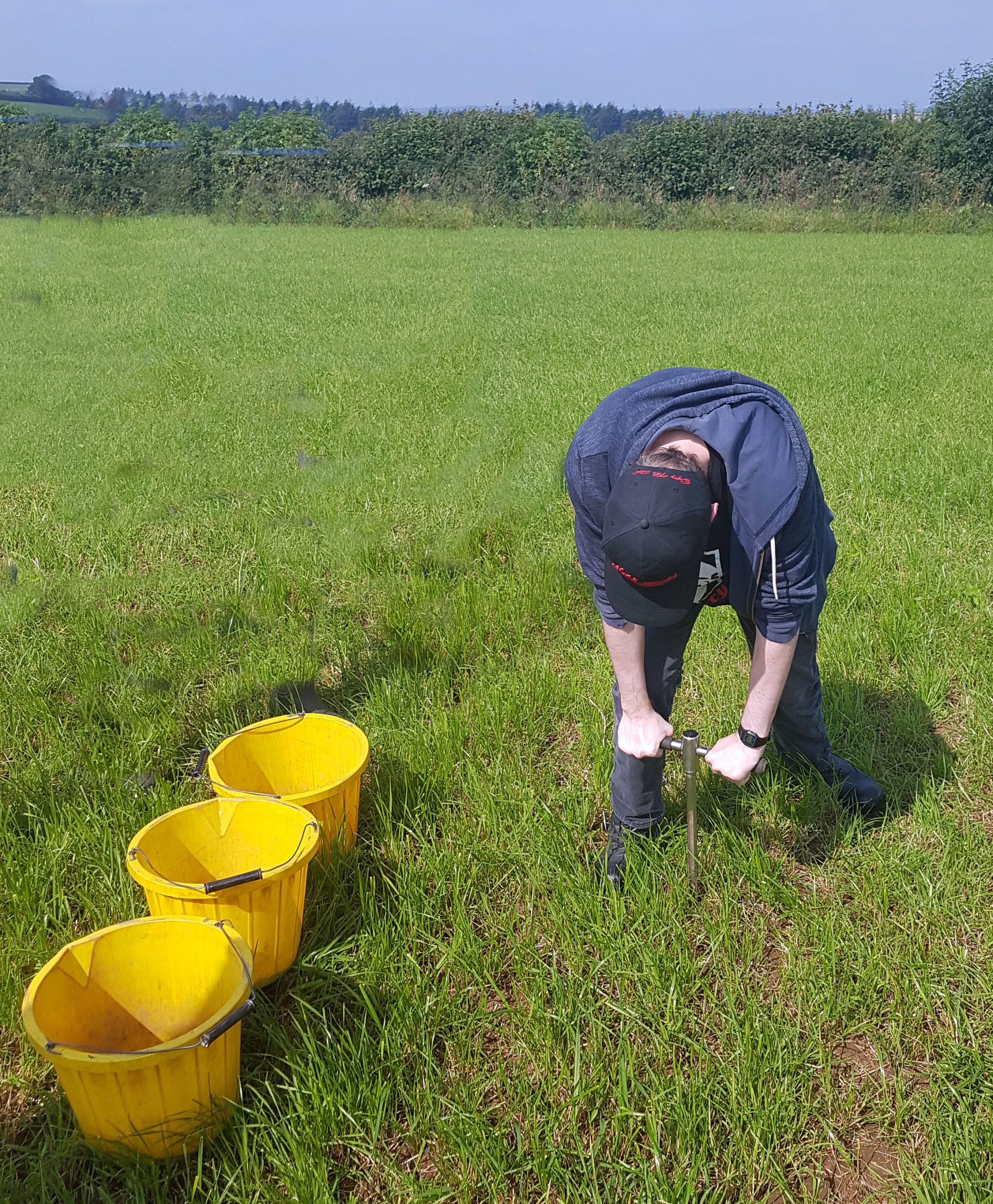
The leached water from the herbal leys had significantly less total nitrogen and nitrate compared to the binary rye-grass and white clover ley treatment in the autumn and early winter period of 2019 across four farms of differing soil types in Cornwall. This is shown in the graphs below. There was no significant difference in ammonium nitrogen leached across the sampled sites.
The effect of seed mix type on mean nitrate nitrogen leaching
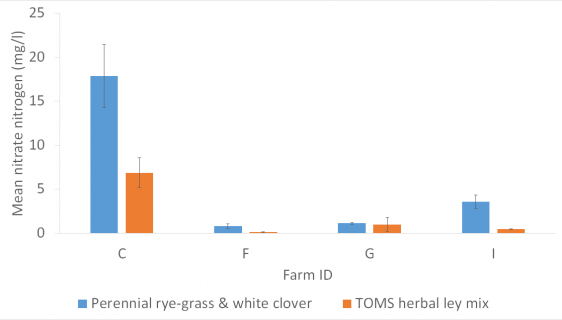
Mean nitrate nitrogen for three sampling periods in November – December 2019, for perennial rye-grass and white clover and TOMS leys. Three replicate samples were taken per lysimeter per ley per timepoint. Sensitivity of the equipment resulted in not all leys sampled in triplicate at each timepoint at each farm. Error bars indicate standard error.
# Farms C and I applied slurry, whilst farms F and G spread FYM.
Mean dissolved organic nitrogen for three sampling periods in November – December 2019, for perennial rye-grass and white clover and TOMS leys. Three replicate samples were taken per lysimeter, per ley, per timepoint. Sensitivity of the equipment resulted in not all leys sampled in triplicate at each timepoint at each farm. Error bars indicate standard error.
Dissolved organic nitrogen is the nitrogen (N)-containing component of dissolved organic matter (DOM) and is a measure of the nitrogen leached and therefore water quality.
Nitrate (NO3) is a naturally occurring form of nitrogen in the soil is the predominant form of plant available nitrogen in agricultural soils. Both inorganic nitrogen (fertilizer) and organic amendments (e.g. farmyard manure, slurry) will mainly be present in the soil as nitrate (following mineralisation and nitrification in the case of organic amendments). Nitrate is highly soluble and is therefore prone to leaching.
The cost of seed
What we did
Our survey of farmers highlighted that seed cost was one of the main barriers to the uptake of herbal leys, so in spring 2020, an extensive online search of seed companies selling pre-mixed temporary ley mixtures was carried out. 36 companies selling multi-species and binary seed temporary ley mixtures were identified and 4 companies that had prices available online and offered a range of both types of mixes, were selected for further investigation. Between them, these companies offered a total of 26 multispecies and 40 binary mixtures.
What we found
In spring 2020, the multi-species mixtures were found to be significantly more expensive per acre than the binary mixtures (for seed purchased for 5 acres (mean drilling rate 13 kg/acre)). Not surprisingly, organically-certified mixtures were also found to be more expensive than non-organic mixes. Multi-species mixes were, on average, for 5 acre purchases, 12.4 % more expensive than non-organic ryegrass-clover mixes and 9.2% more expensive than organic ryegrass clover mixes for organic seed.
Species establishment at trial farm sites
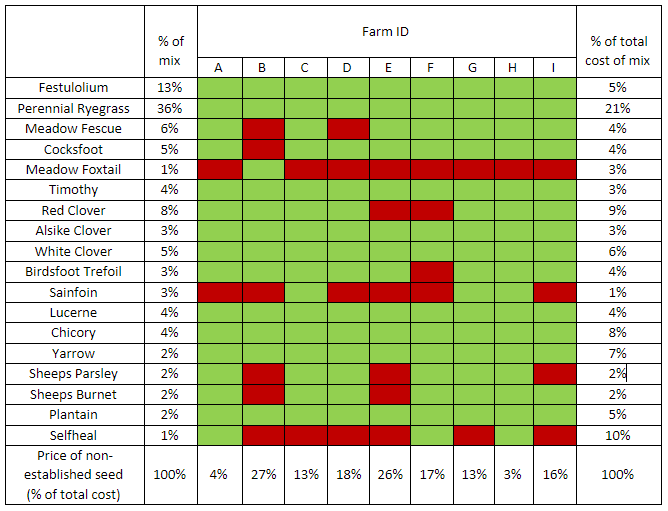
Herbal ley seed mixes typically cost more than a standard perennial rye-grass and white clover mix. As they are an investment, care needs to be taken to only purchase species that will establish under the conditions on the farm. The TOMS trial farms could save 3-27% of the total cost of their mix, simply by not purchasing the species that failed to establish in their ley.
Meadow foxtail, sainfoin and selfheal did not establish on the majority of the participating farm sites. Together these species represent 14% of the total cost of the mix (3%, 1% and 10% respectively).
As every farm, and every field is different, finding what works on a particular farm is often a process of trial and error. Furthermore, changing growing conditions can mean that what works one year, may not work the next. It is therefore important to experiment wisely and monitor the outcome.
Sowing a small area with a variety of species and using our ‘Sward App’ to identify and monitor the performance of species within the sward will allow you to identify what works (or not) and to refine the mix to offer a better return on investment. To find how using the TOMS multi-species sward app can help you monitor your sward, please click here.
Estimate the cost of your own bespoke mixes with our seed cost calculator.
Enter your own prices or default to prices of summer 2020.

